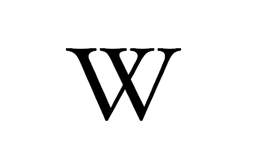Evolución de los tiempos compuestos en portugués durante los siglos XVI y XVII

- Statement of Responsibility:
-
Carrasco González, Juan María
- Main Author:
- Format:
-
Journal article
- Language:
-
Spanish; Castilian
- Form / Genre:
-
text (article)
- Published:
-
2014
- In:
-
Archivum: Revista de la Facultad de Filología ISSN 0570-7218 Tomo 64, 2014, pags. 77-100
- Subjects:
- Annotation:
-
In this paper we study the evolution of the compound tenses in Portuguese during a period of time that had never been studied: from mid 16th century to mid 17th century. Therefore it is possible to have a complete vision of the use of the compound tenses in the moment of classical or modern Portuguese formation. For this study we have chosen the work of three authors: Sebastião Toscano, Duarte Nunes de Leão and Francisco Rodrigues Lobo.
| LEADER | 02633nab a22003130u 4500 | ||
| 001 | spart8263 | ||
| 003 | ES-LoD | ||
| 005 | 20230516100050.0 | ||
| 008 | 230516s2014\\\\sp\\\\\\\\\\\\\\\\\\spa\\ | ||
| 022 | \ | \ | |a 0570-7218 |
| 041 | \ | \ | |a spa |
| 100 | \ | \ | |a Carrasco González, Juan María |
| 245 | \ | \ | |a Evolución de los tiempos compuestos en portugués durante los siglos XVI y XVII |c Carrasco González, Juan María |
| 260 | \ | \ | |c 2014 |
| 520 | 3 | \ | |a In this paper we study the evolution of the compound tenses in Portuguese during a period of time that had never been studied: from mid 16th century to mid 17th century. Therefore it is possible to have a complete vision of the use of the compound tenses in the moment of classical or modern Portuguese formation. For this study we have chosen the work of three authors: Sebastião Toscano, Duarte Nunes de Leão and Francisco Rodrigues Lobo. |
| 538 | \ | \ | |a application/pdf |
| 540 | \ | \ | |a LICENCIA DE USO: Los documentos a texto completo incluidos en Dialnet son de acceso libre y propiedad de sus autores y/o editores. Por tanto, cualquier acto de reproducción, distribución, comunicación pública y/o transformación total o parcial requiere el consentimiento expreso y escrito de aquéllos. Cualquier enlace al texto completo de estos documentos deberá hacerse a través de la URL oficial de éstos en Dialnet. Más información: https://dialnet.unirioja.es/info/derechosOAI | INTELLECTUAL PROPERTY RIGHTS STATEMENT: Full text documents hosted by Dialnet are protected by copyright and/or related rights. This digital object is accessible without charge, but its use is subject to the licensing conditions set by its authors or editors. Unless expressly stated otherwise in the licensing conditions, you are free to linking, browsing, printing and making a copy for your own personal purposes. All other acts of reproduction and communication to the public are subject to the licensing conditions expressed by editors and authors and require consent from them. Any link to this document should be made using its official URL in Dialnet. More info: https://dialnet.unirioja.es/info/derechosOAI |
| 650 | |a tiempos compuestos | ||
| 650 | |a lengua portuguesa | ||
| 650 | |a influencia del español | ||
| 650 | |a diacronía | ||
| 650 | |a compound tenses | ||
| 650 | |a Portuguese language | ||
| 650 | |a Spanish influence | ||
| 650 | |a diachrony | ||
| 655 | \ | 4 | |a text (article) |
| 773 | |t Archivum: Revista de la Facultad de Filología |x 0570-7218 |g Tomo 64, 2014, pags. 77-100 | ||
| 856 | 4 | |u https://dialnet.unirioja.es/servlet/oaiart?codigo=4990716 | |
| 995 | \ | \ | |a Biblioteca Nacional de España |
stdClass Object
(
[LEADER] => 02633nab a22003130u 4500
[001] => Array
(
[0] => spart8263
)
[003] => Array
(
[0] => ES-LoD
)
[005] => Array
(
[0] => 20230516100050.0
)
[008] => Array
(
[0] => 230516s2014\\\\sp\\\\\\\\\\\\\\\\\\spa\\
)
[022] => Array
(
[0] => stdClass Object
(
[ind1] => \
[ind2] => \
[code] => stdClass Object
(
[a] => 0570-7218
)
)
)
[041] => Array
(
[0] => stdClass Object
(
[ind1] => \
[ind2] => \
[code] => stdClass Object
(
[a] => spa
)
)
)
[100] => Array
(
[0] => stdClass Object
(
[ind1] => \
[ind2] => \
[code] => stdClass Object
(
[a] => Carrasco González, Juan María
)
)
)
[245] => Array
(
[0] => stdClass Object
(
[ind1] => \
[ind2] => \
[code] => stdClass Object
(
[a] => Evolución de los tiempos compuestos en portugués durante los siglos XVI y XVII
[c] => Carrasco González, Juan María
)
)
)
[260] => Array
(
[0] => stdClass Object
(
[ind1] => \
[ind2] => \
[code] => stdClass Object
(
[c] => 2014
)
)
)
[520] => Array
(
[0] => stdClass Object
(
[ind1] => 3
[ind2] => \
[code] => stdClass Object
(
[a] => In this paper we study the evolution of the compound tenses in Portuguese during a period of time that had never been studied: from mid 16th century to mid 17th century. Therefore it is possible to have a complete vision of the use of the compound tenses in the moment of classical or modern Portuguese formation. For this study we have chosen the work of three authors: Sebastião Toscano, Duarte Nunes de Leão and Francisco Rodrigues Lobo.
)
)
)
[538] => Array
(
[0] => stdClass Object
(
[ind1] => \
[ind2] => \
[code] => stdClass Object
(
[a] => application/pdf
)
)
)
[540] => Array
(
[0] => stdClass Object
(
[ind1] => \
[ind2] => \
[code] => stdClass Object
(
[a] => LICENCIA DE USO: Los documentos a texto completo incluidos en Dialnet son de acceso libre y propiedad de sus autores y/o editores. Por tanto, cualquier acto de reproducción, distribución, comunicación pública y/o transformación total o parcial requiere el consentimiento expreso y escrito de aquéllos. Cualquier enlace al texto completo de estos documentos deberá hacerse a través de la URL oficial de éstos en Dialnet. Más información: https://dialnet.unirioja.es/info/derechosOAI | INTELLECTUAL PROPERTY RIGHTS STATEMENT: Full text documents hosted by Dialnet are protected by copyright and/or related rights. This digital object is accessible without charge, but its use is subject to the licensing conditions set by its authors or editors. Unless expressly stated otherwise in the licensing conditions, you are free to linking, browsing, printing and making a copy for your own personal purposes. All other acts of reproduction and communication to the public are subject to the licensing conditions expressed by editors and authors and require consent from them. Any link to this document should be made using its official URL in Dialnet. More info: https://dialnet.unirioja.es/info/derechosOAI
)
)
)
[650] => Array
(
[0] => stdClass Object
(
[ind1] => 0
[ind2] => 4
[code] => stdClass Object
(
[a] => tiempos compuestos
)
)
[1] => stdClass Object
(
[ind1] => 0
[ind2] => 4
[code] => stdClass Object
(
[a] => lengua portuguesa
)
)
[2] => stdClass Object
(
[ind1] => 0
[ind2] => 4
[code] => stdClass Object
(
[a] => influencia del español
)
)
[3] => stdClass Object
(
[ind1] => 0
[ind2] => 4
[code] => stdClass Object
(
[a] => diacronía
)
)
[4] => stdClass Object
(
[ind1] => 0
[ind2] => 4
[code] => stdClass Object
(
[a] => compound tenses
)
)
[5] => stdClass Object
(
[ind1] => 0
[ind2] => 4
[code] => stdClass Object
(
[a] => Portuguese language
)
)
[6] => stdClass Object
(
[ind1] => 0
[ind2] => 4
[code] => stdClass Object
(
[a] => Spanish influence
)
)
[7] => stdClass Object
(
[ind1] => 0
[ind2] => 4
[code] => stdClass Object
(
[a] => diachrony
)
)
)
[655] => Array
(
[0] => stdClass Object
(
[ind1] => \
[ind2] => 4
[code] => stdClass Object
(
[a] => text (article)
)
)
)
[773] => Array
(
[0] => stdClass Object
(
[ind1] => 0
[ind2] => \
[code] => stdClass Object
(
[t] => Archivum: Revista de la Facultad de Filología
[x] => 0570-7218
[g] => Tomo 64, 2014, pags. 77-100
)
)
)
[856] => Array
(
[0] => stdClass Object
(
[ind1] => 4
[ind2] => 0
[code] => stdClass Object
(
[u] => https://dialnet.unirioja.es/servlet/oaiart?codigo=4990716
)
)
)
[995] => Array
(
[0] => stdClass Object
(
[ind1] => \
[ind2] => \
[code] => stdClass Object
(
[a] => Biblioteca Nacional de España
)
)
)
)










